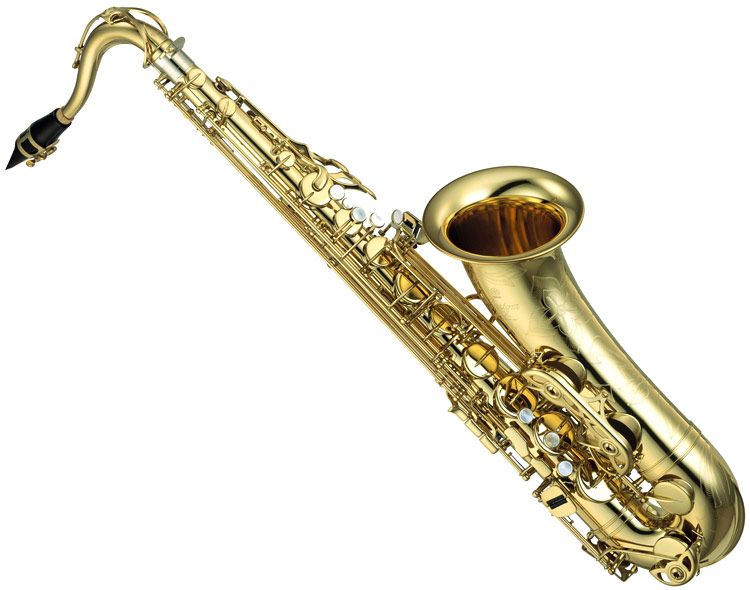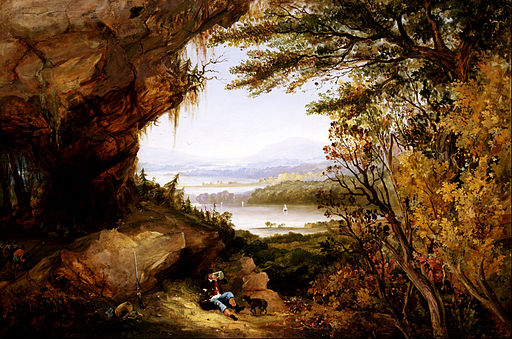By Maggie Belnap
Despite the old saying, a book’s cover is perhaps the strongest factor in why we pick up a book off the shelf or pause during our online web shopping. Of course, we all like to think that we are above such a judgmental mentality, but the truth is that a cover design can make — or break — a book’s fortunes.
Brady McNamara, Senior Designer at Oxford University Press, admitted that designing book covers isn’t as easy as one might think.
“To create a book jacket,” McNamara explained, “You have to first understand book’s concept. I have about 75 books at a time to design jackets for. That’s just too much. To help, I have about 10-12 really great freelance designers who really know what OUP is all about.” He continued, “I also always try one or two new freelancers each go around. Sometimes they work, and sometimes they don’t. That’s kind of what happened to Dog Whistle Politics.”
Ian Haney Lopez’s book, examining how politicians use veiled racial appeals to persuade white voters to support policies that favor the rich and threaten the middle class, is a difficult concept to capture. “It was a particularly tough cover to design: the subject just doesn’t lend itself to one concrete image,” McNamara agreed. He and his freelancer toiled over numerous cover drafts.
Dog Whistle Politics Design 1:
McNamara: “This is the initial sketches shown by our freelancer, I really liked [the] 1950’s clip art man. It had a kitchiness and style typical to ‘the conservative establishment.’ However, the cover review panel (editor and marketing manager) thought the starburst frame seemed out of place, like vintage advertising.”

Dog Whistle Politics Design 2:
McNamara: “In another sketch, the designer used a black background and surrounded our clip art guy with symbols of the economy and arrows illustrating its downfall. It was arbitrary and yet too obvious; just didn’t feel right.”

Dog Whistle Politics Design 3:
McNamara: “[The] editor suggested that an actual image of a dog could work. The sketch was submitted but not shown. I made a personal call that it was too gimmicky and distractingly odd. It was weird, and a not funny weird.”

Dog Whistle Politics Design 4:
“I finally took the design on myself,” says McNamara, laughing slightly as he remembers the process. “I had a pretty good idea of what we needed by now. It really wasn’t the freelancer’s fault, again, it’s just one of those books that is tough to design for. I tried an image of a bull dog and after the author mentioned a dog whistle, I incorporated that into the title. Nothing more literal I guess. The bulldog turned out to be too cute.”

Dog Whistle Politics Design 5:
McNamara: “I tried a more menacing Doberman in black and white—ears pricked up as if hearing the whistle. I also brought a serious tone back to the design by using just red, gray, and black type. This was finally approved. Not the most esoteric design, but it stands out on the shelf – if only for those pointy ears.”

While McNamara struggled with the concept for Dog Whistle Politics, design is a collaborative process.
James Cook, an Oxford University Press editor, discussed the pressing dilemmas of the design process: “I know the book best and worked with it the longest, so I understand the themes and perhaps have some ideas about how they can be illustrated.” He serves as a translator to the designer from the book itself and the author. “I talk with the author and try to relay his or her wishes to the designer, while also making sure the book and title are being represented. A cover needs to align, interpret, and reflect the books themes accurately, while also being attractive to a buyer.”
One of his titles, Coming Up Short, a book that sheds light on what it really means to be a working class young adult with all its economic insecurity and deepening inequality, also went through a number of cover jackets before finding the right fit.
Coming Up Short Design 1:
“One of the first designs was a girl in a skirt, sitting on a swing in the park,” remembers Cook. “It certainly portrayed what we wanted, but also had a sexual predator vibe as well.”
“I didn’t have a good feeling about the first cover I saw,” the author Jennifer Silva confessed. “I thought it had a kind of Lolita vibe when mixed with the title of the book. I expressed my concern, and it turned out that others at Oxford agreed.”

“Jen was great to work with,” Cook acknowledged. “Sometimes it becomes difficult going back and forth trying to satisfy everyone’s wishes while also finding a good portrayal of the book. Sometimes authors just don’t want certain colors or schemes in the cover, and it’s my job to make sure they are heard.”
Coming Up Short Design 2:
After several other drafts, everyone agreed on a jacket: saturated yellow with multiple ladders.
“I love it,” raved Silva. “It feels young, modern, and hip. It’s not too literal, and also looks great on a bookshelf.” When asked about if the experience of jacket designing was frustrating or stressful, Jen waves the issue away saying, “No, it was fun to go back and forth!”

Not all books are as design-intensive as Dog Whistle Politics and Coming Up Short. Cook says, “Some academic books are easy because you can follow a certain style that is well known and easily recognized as being a textbook.”
However, there are always a few books along the way that keep designers and editors nimble.
Maggie Belnap is a Social Media Intern at Oxford University Press. She attends Amherst College.
Subscribe to the OUPblog via email or RSS.
The post Books by design appeared first on OUPblog.

By Maggie Belnap
Short stories populate many childhoods, with the aim to instill morals and virtues in undeveloped and wandering minds. Whether it’s the tale of Rumpelstiltskin or the Boy Who Cried Wolf, these tales make a powerful impression. Take our short stories quiz, based off of Oscar Wilde’s The Complete Short Stories and The Oxford Book of American Short Stories, 2nd ed, edited by Joyce Carol Oates, and see if you really know your short stories.
Your Score:
Your Ranking:
Maggie Belnap is a Social Media Intern at Oxford University Press. She attends Amherst College.
The Complete Short Stories by Oscar Wilde is edited by John Sloan. He is Fellow and Tutor in English, Harris Manchester College, Oxford. The Oxford Book of American Short Stories, 2nd ed, is edited by Joyce Carol Oates. Oates is the National Book Award-winning author of over fifty novels, including bestsellers We Were the Mulvaneys, Blonde, and The Gravedigger’s Daughter. She is the Roger S. Berlind Distinguished Professor of the Humanities at Princeton University.
Oscar Wilde is the author of “The Happy Prince,” “The Fisherman and His Soul,” “The Nightengale and the Rose,” “The Star Child,” and “The Young King.” Washington Irving is the author of “Rip Van Winkle.” James Baldwin is the author of “Sonny’s Blues.”
Subscribe to the OUPblog via email or RSS.
Subscribe to only literature articles on the OUPblog via email or RSS.
The post How well do you know short stories? appeared first on OUPblog.

By Maggie Belnap
The saxophone has long been a star instrument in jazz, big bands, and solo performances. But when exactly did this grand instrument come about? Who invented it? Not many people know that when the saxophone first appeared in jazz, many performers turned up their noses to it, much preferring the clarinet. But as the hardness began to wear off, the saxophone became a hit in itself.
1. Adolphe Sax moved to Paris in 1842 and invented the saxophone in 1846.
2. The saxophone has a metal body and is played with a single beating reed, which the player controls through his or her mouth tightness.
3. There are eight different saxophones in the sax family. The highest pitched ones are known as the Sopranino and Soprano sax. The more moderately middle toned saxes are the Alto and Tenor, while the lowest pitched sax’s are Baritone Sax, Bass Sax, Contrabass Sax, and Sub-Contrabass Sax.

4. Only four members of the sax family are commonly used today: the Soprano, Alto, Tenor, and Bass Saxophone. The most popular are the Alto and Tenor.
5. Although the saxophone is usually thought of as a jazz instrument, it has been used successfully with symphonic music such as Bizet, Massenet, and Berlioz.
6. Although the saxophone is closely related to the clarinet, the fingering of a saxophone is much easier. Because the higher and lower octaves of the sax have the same fingering, it is much easier to play than the clarinet, which over blows at 12ths, meaning a clarinet player must learn different fingers for higher and lower octaves.
7. When the saxophone was first introduced to jazz, the clarinet was much more popular and many musicians resisted the saxophone for a time.
8. However, the tenor, alto, and soprano sax’s soon caught on and became very popular in music from New Orleans jazz to rock music.
9. Gene Ammons, founder of the Chicago school of Tenor Sax, recorded, “The Big Sound” and “Groove Blues” on a single day in 1958. The album includes many talented players, especially Gene Ammons talented saxophone playing.
10. John Douglas Surman was a remarkable play of the soprano and baritone saxophones (as well as many other instruments). He attended the London College of Music and was a member of the Jazz Workshop at Plymouth Arts Center. is solo album, The Amazing Adventures of Simon Simon, includes and features many different saxophone sounds.
Maggie Belnap is a Social Media intern at Oxford University Press. She attends Amherst College.
Oxford Reference is the home of reference publishing at Oxford. With over 16,000 photographs, maps, tables, diagrams, and quick and speedy search, Oxford Reference save you time while enhancing and complimenting your work.
Subscribe to OUPblog via email or RSS.
Subscribe to only music articles on OUPblog via email or RSS.
Image credit: By Undefined («собственная работа»). Public domain via Wikimedia Commons
The post 10 facts about the saxophone and its players appeared first on OUPblog.

By Maggie Belnap
The invention of the synthesizer in the mid-20th century inspired composers and redesigned electronic music. The synthesizer sped up the creation process by combining hundreds of different sounds, and composers were inspired to delve deeper into the possibilities of electronic music.
1. Electronic music was first attempted in the United States and Canada in the 1890s. Its creation process was difficult. To create just a few minutes of music, with perhaps a hundred different sounds, could take weeks to finalize.
2. The first true synthesizer was released to the public in 1956. It was made up of an array of electronic tone generators and processing devices that controlled the nature of the sounds.
3. That synthesizer played itself in traveling patterns that could be repeated or not. It was controlled by a system of brush sensors that responded to patterns of pre-punched holes on a rotating paper roll.
4. The most well-known and celebrated electronic pieces in the 1950s are Eimert’s Fünf Stücke, Stockhausen’s Gesang der Jünglinge, Krenek’s Spiritus Intelligentiae Sanctus, Berio’s Mutazioni, and Maderna’s Notturno.
5. The first electronic concert was given in the Museum of Modern Art, NY on 28 October 1953 by Ussachevsky and Luening.
6. Two Americans, Robert Moog and Donald Buchla, created separate companies to manufacture synthesizers in the 1960s. Robert Moog’s synthesizer was released in 1965 and is considered a major milestone for electronic music.
7. They were followed by others and soon synthesizers that were voltage-controlled and portable were available for studio and on stage performances.
8. In the 1980s, commercial synthesizers were produced on a regular basis. Yamaha released the first all-digital synthesizer in 1983.
Maggie Belnap is a Social Media intern at Oxford University Press. She attends Amherst College.
Oxford Reference is the home of reference publishing at Oxford. With over 16,000 photographs, maps, tables, diagrams and a quick and speedy search, Oxford Reference saves you time while enhancing and complementing your work.
Subscribe to OUPblog via email or RSS.
Subscribe to only music articles on OUPblog via email or RSS.
The post Eight facts about the synthesizer and electronic music appeared first on OUPblog.













